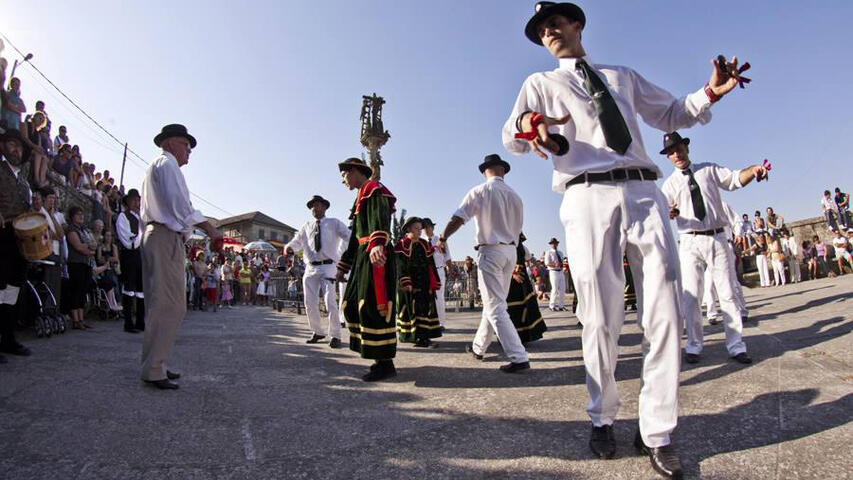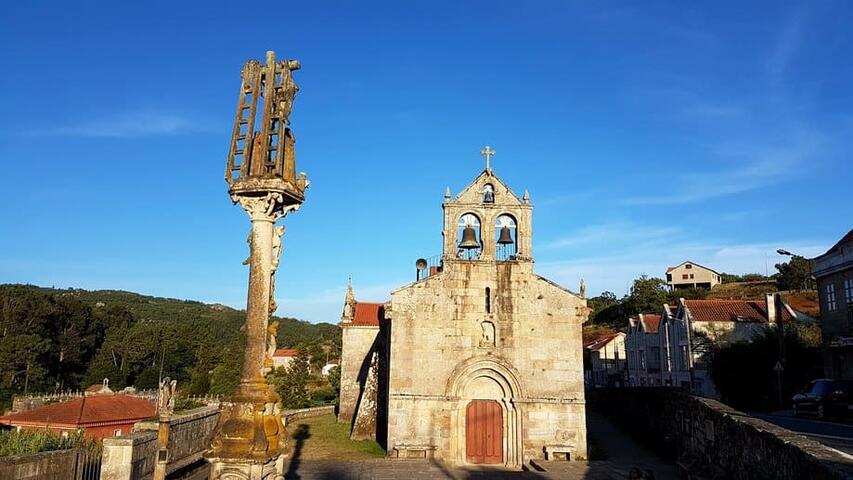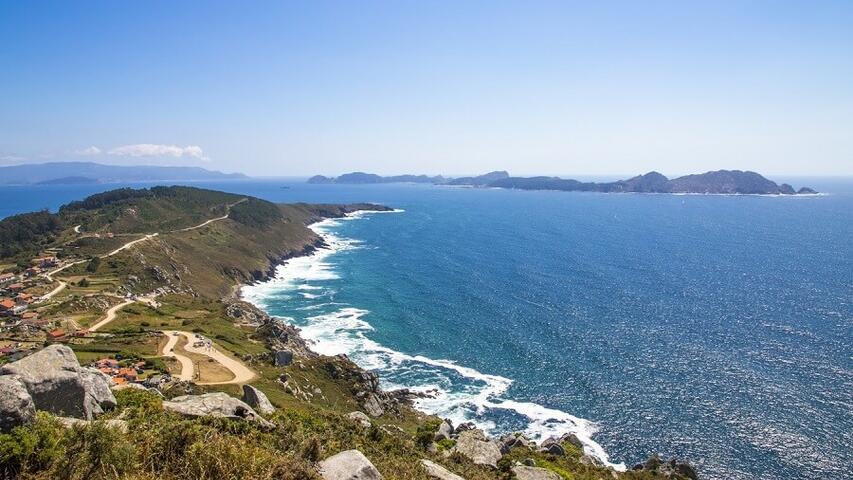Dance of San Roque de Hío
A centuries-old dance in honour of San Roque
The famous cruceiro of O Hío is witness to a dance declared of Tourist Interest.
Every 16th August, in the parish of O Hío, in Cangas, one of the oldest traditions in the region is celebrated: the Ancestral Dance of San Roque. The festivity, which goes back centuries in the history of O Hío, has been maintained over time, even in times of greater difficulty.

Sixteen people are in charge of performing the dance of ladies and gallants, and although the name could be misleading, unlike the twinned dances, this dance is performed only by men. Ten are the galanes, and five are the damas or sanrroquiños, represented by the youngest members of the parish, dressed in the colourful costume of San Roque; the galanes wear white shirts and trousers, blue jackets and felt hats. They all follow the instructions of the guide, who organises and manages the event from start to finish and must be the eldest of the group.
The dance begins in the morning, preceded by a solemn mass at 12 noon and the procession of San Roque. The dancers perform the walk with their peculiar genuflections every three steps, and on the way back from the procession there is the contradanza, a sudden change of rhythm until they return to the church, with the saint's shirt off, all to the sound of a piper and a drummer.
The dance, which lasts 45 minutes, is repeated at the end of the evening, normally at 7 p.m., but this time without the saint and without the liturgical character.
In order to take part in this performance, the dancers must be from O Hío and there must be a vacancy in the group. All with the majestic local cross as a witness, considered the best cross of Galicia, from 1872, carved mostly on the same piece of granite by the sculptor Cerviño.
The origin of this festival is the subject of debate among historians: while some consider it to be part of a celebration of Saint Roque in thanksgiving for the end of the plague, others point out that it is a kind of imitation of the dances of the local nobility. In any case, it is worthy of attention, especially after being declared of Tourist Interest in Galicia in 2005, together with that of Aldán, which is held on 20 January, and that of Darbo, on 8 September.


